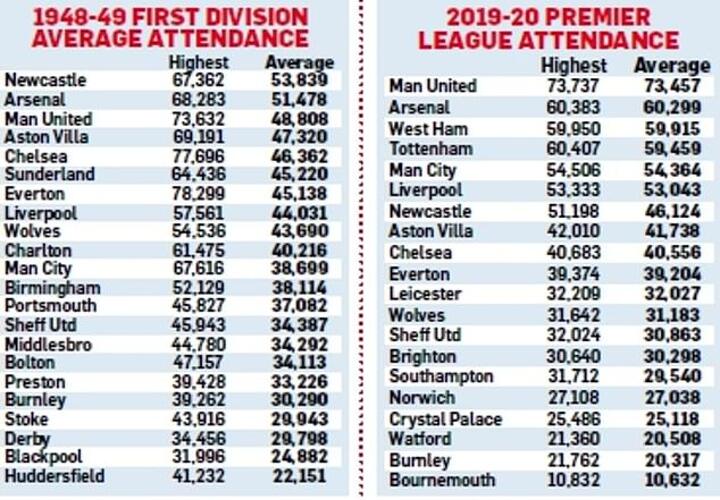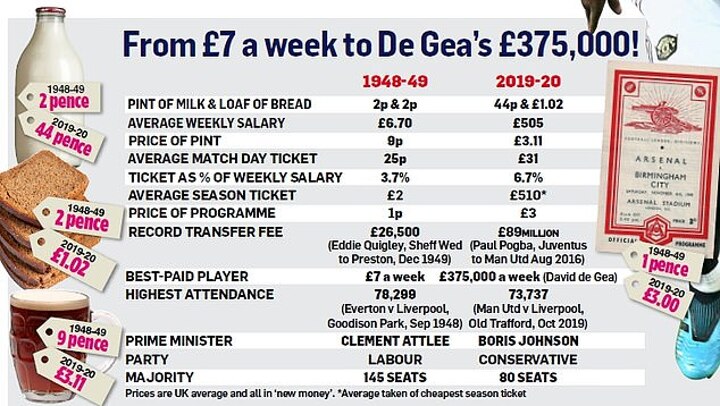Seventy years on from English football’s attendance heyday, the Premier League is on course this season to record the highest average top-flight gate of all time.

The current record of 38,776 people per match was set in 1948-49, a season when Portsmouth became the champions of England, and Newcastle United — with Jackie Milburn their star player — drew the biggest crowds.
Newcastle attracted an average of 53,839 fans to each of their 21 First Division home games. Their biggest single crowd that campaign was more than 67,000 fans.

Arsenal had the second biggest crowds (see table), with Manchester United, Aston Villa, Chelsea, Sunderland, Everton, Liverpool, Wolves and Charlton recording average gates of more than 40,000 per game. The highest single gate of the season for many clubs was north of 60,000.

But new research for a ‘Popularity Issue’ of the annual Global Sports Salaries Survey (GSSS) forecasts the Premier League in 2019-20 will break the 39,000 people per top-flight match barrier for the first time since league football began in 1888.
By the time each club had played 16 games this season last weekend and each had played eight of those at home, the average gate was 39,293. With more than 40 per cent of this season complete at that stage — after 160 games from 380 — the trend suggests the 70-year record will fall.

In an age of saturation football, high tickets prices and weariness among many fans about the ills of ‘modern football’, it is remarkable that such a record looks set to be broken.

As recently as the first season of the Premier League, in 1992-93, average top-flight crowds were 21,125 and that itself seemed healthy after the low of 18,856 in the old First Division in 1983-84 as hooliganism blighted the game.
It took until the 1998-99 season, when Manchester United swashbuckled to their famous Treble, for the Premier League era to register average league crowds above 30,000: they were 30,580 that season. It now seems feasible that England’s top flight might even register a season with an average figure above 40,000 in the coming years.
Only Germany’s Bundesliga has ever recorded such a massive figure (routinely more than 40,000 per game) and only the NFL in all professional sport has a bigger average (67,000 last season).

There are a few reasons why the Premier League continues to get more and more people through the turnstiles. First, an increasing number of clubs with relatively new or expanded grounds with bigger capacities. Second, the league’s international TV exposure continues apace, earning more in foreign broadcasting rights sales per season (£1.4billion) than any sports league in the world. This in turn has led to an increase in international football tourism.

VisitBritain’s most recent figures show that about 800,000 people per year attend an English football match while on a trip from a foreign country. Traditionally the most visitors have come from Ireland and across Scandinavia but the latest research shows growth in numbers from China, India, Brazil and the USA.
Overseas visitors who see nothing strange about buying a half-and-half scarf are routinely mocked by fans. But they indicate an attraction of a Premier League on course to break new ground.
